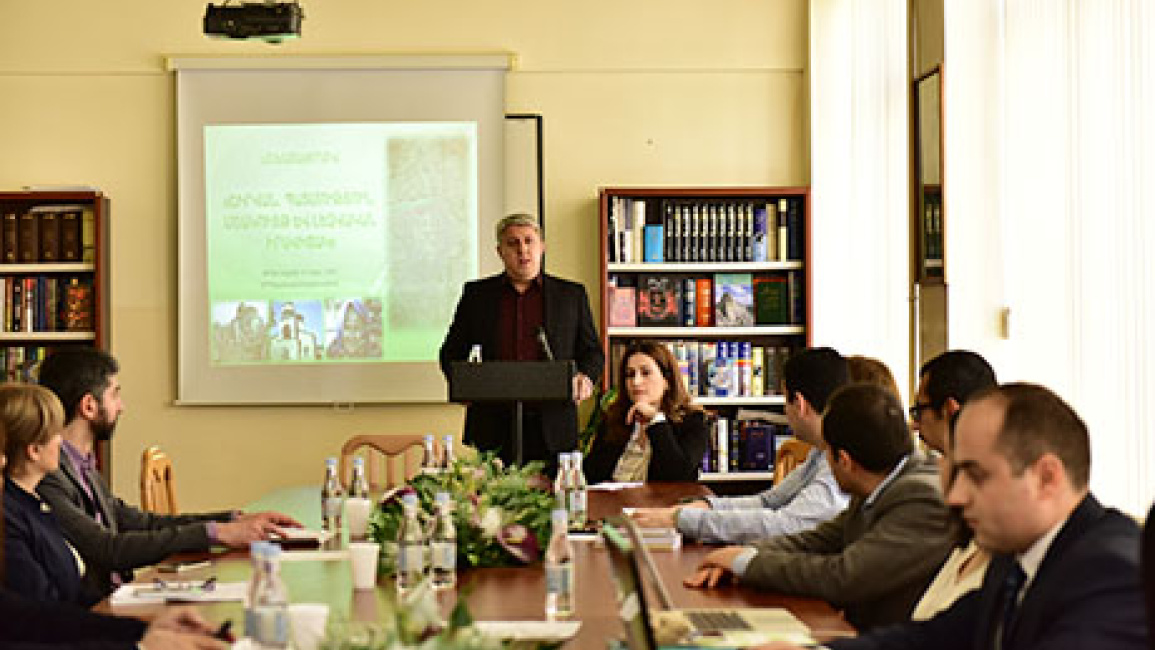- Main
- Node
- “SHIRVAN: HISTORY, CULTURE AND LANGUAGE SITUATION”: WORKING MEETING AT THE CHAIR OF IRANIAN STUDIES
April 12, 2019 | 13:46
Science
“SHIRVAN: HISTORY, CULTURE AND LANGUAGE SITUATION”: WORKING MEETING AT THE CHAIR OF IRANIAN STUDIES
The working meeting entitled “Shirvan: history, culture and language situation” was held today at the Chair of Iranian Studies of YSU.

Lecturers of the Chair, post-graduates, as well as representatives of the RA NAS Institute of Archaeology and Ethnography were present at the meeting.
The head of the Chair of Iranian Studies Vardan Voskanyan performed a greeting speech and attached importance to the studies related to the historical region of Shirvan.
“This meeting is dedicated to one of the most interesting regions of Eastern Transcaucasia. The region where numerous ethnic, cultural, language and historical events took place. Actually, modern Azerbaijanis who are of political interest and practical significance for us were formed here”, presented Vardan Voskanyan.
He noted that during the meeting the speakers will refer to numerous problems dealing with the ethnic, cultural, language and historical problems of Shirvan as a separate region.
“The heart of today’s Azerbaijan Republic is studied today both from historical-cultural and language and somewhat from the point of view of identity”, said Vardan Voskanyan stressing that we deal with the region where the original Caucasian element was replaced with Persian society.
According to Vardan Voskanyan, the region is outstanding with the modern Azerbaijani language was formed in this area on the basis of the Turkish dialect of Shirvan and in fact, it is full of Persian vocabulary.
The senior researcher of the RA NAS Institute of Archaeology and Ethnography Torq Dalalyan came up with the report on “Information about the Armenian kingdom of Shirvan”. Attaching importance to the studies of the area for Armenia, he spoke about the sources giving us the information about the Armenian kingdom of Shirvan.
They are mainly off two types: bibliographic and lithographic.
The bibliographic source is the works by the 12th century chronologist Matheos Urhayetsi. Some information can be found in the works by Stepanos Orbelyan.
The sources of the second group are lithographs preserved in Khachmas cemetery. Khachmas is a village in the north of Azerbaijan previously populated by Armenians. A part of this village is located in the territory of the Dagestan Republic.
According to the speaker, the lithographs found in Vahanavanq located in Syunik are also valuable. Vahanavanq is the royal cemetery of Syunik.
A number of lecturers of the Chair made reports too. The meeting was finished with a discussion.

